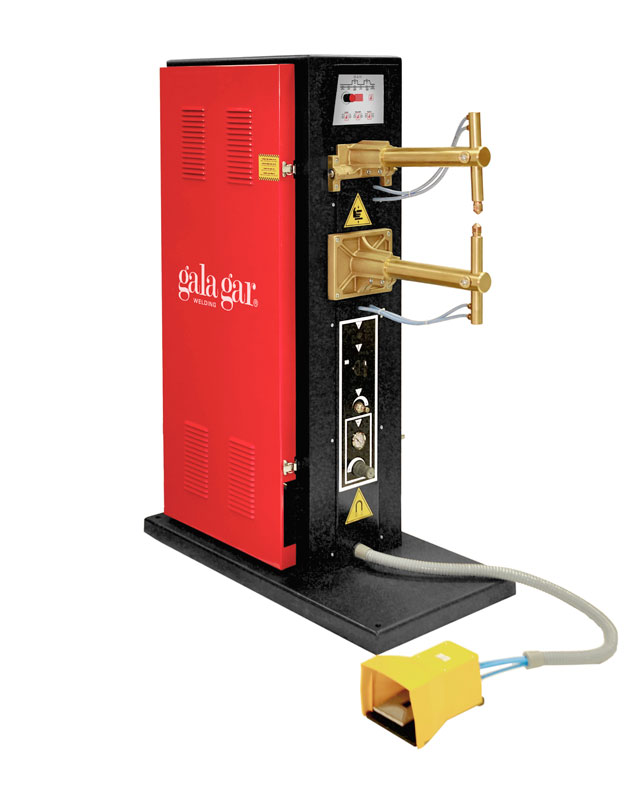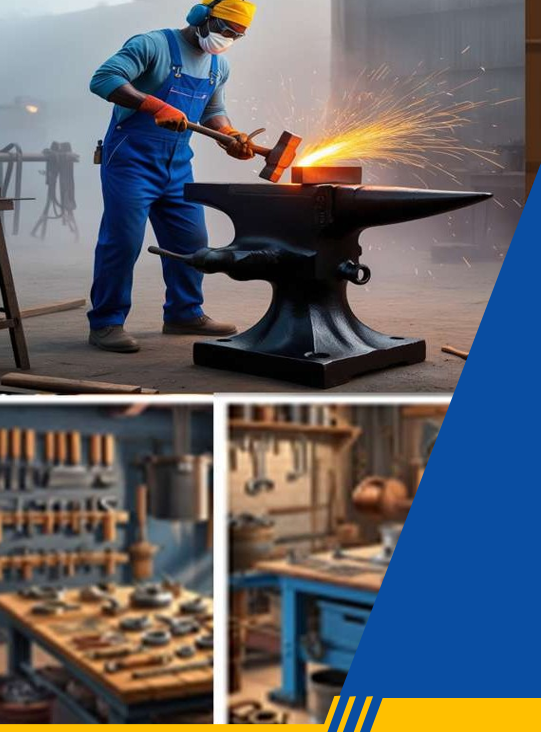This course equips trainees with practical knowledge and skills to perform effective preventive maintenance on industrial machines. Learners gain competence in preparing for maintenance work, maintaining machines, and completing post-maintenance activities. By the end of the course, trainees will be able to maintain machines safely, efficiently, and professionally, ensuring smooth operation and minimizing breakdowns in manufacturing environments.

- Teacher: RAISSA IRADUKUNDA
This course equips students with the knowledge and practical skills required to perform Shielded Metal Arc Welding (SMAW) on aluminium, stainless steel, and cast iron materials. It introduces the properties and challenges of welding these metals, electrode selection, preparation techniques, and the effects of heat input on weld quality
- Teacher: ELIE NSENGIMANA
This course provides students with both theoretical knowledge and practical skills required to perform spot welding effectively and safely in manufacturing processes. The training covers the fundamental principles of resistance spot welding, including the generation of heat through electrical resistance, material properties, and the role of electrodes. Students will learn about the types of spot welding machines, welding parameters (current, pressure, and time), and factors affecting weld quality.

- Teacher: ELIE NSENGIMANA
A SolidWorks design is a power full 3D CAD software design for mechanical parts, assemblies, and engineering drawings. It covers essentials like sketching, modeling, and drawing, plus advanced topics such as surface modeling and large assembly management. By the end, you will gain practical skills to create production-ready designs and optimize workflows in engineering and manufacturing.
- Teacher: Vedaste NDORUNKUNDIYE
This module describes employable and practicable skills, knowledge and right attitudes required by the learner to prepare the workplace for lathe machine operation, carry out turning the product and carry out finishing activities for operating lathe machine. The contents provided in this course are package reserved for a learner pursuing TVET certificate IV in Manufacturing Technology. Graduates at this level will have knowledge and skills for finishing works, community involvement and further leaning
- Teacher: PHILIBERT GIRANEZA
Oxyacetylene welding is a gas welding process that uses a flame produced by burning acetylene in oxygen. It's typically used for joining metals, including aluminum in some cases.
Key Characteristics When Welding Aluminum:
- Melting Point: Aluminum melts at a relatively low temperature (~660°C), making it suitable for gas welding but prone to overheating.
- Oxide Layer: Aluminum forms a tough aluminum oxide layer (~2050°C melting point), which must be removed before welding. This is usually done using a stainless steel wire brush or chemical cleaning.
- Flux: A special aluminum welding flux is required to prevent oxidation during welding and help clean the joint.
Welding Process:
- Surface Preparation:
- Remove oxide layer and clean the surface thoroughly.
- Apply flux to prevent reoxidation.
- Torch Settings:
- Use a neutral flame (equal parts oxygen and acetylene).
- Avoid oxidizing flame (can degrade aluminum).
- Welding Technique:
- Use a soft, sweeping motion to avoid overheating.
- Use appropriate aluminum filler rod.
- Flux residue must be cleaned after welding to prevent corrosion.
Advantages:
- Portable and inexpensive setup.
- Suitable for thin aluminum sheets.
- No need for electricity.
Disadvantages:
- Not ideal for thick aluminum sections.
- Higher skill required due to aluminum’s heat sensitivity.
- Flux residue can cause corrosion if not cleaned properly.
- Teacher: ALBERT IMANIRAFASHA
Forging is a metalworking process where compressive forces are applied to shape metal, typically using a hammer or press. It improves mechanical properties by aligning the grain structure.
🔹 Purpose:
- To produce strong, durable parts
- Used in high-stress applications (e.g., automotive, aerospace, tools)
🔹 Types of Forging:
- Open-Die Forging
- Workpiece is compressed between flat dies
- Suitable for large or simple shapes
- Closed-Die Forging (Impression Die)
- Metal is compressed in a die cavity
- High precision and complex shapes
- Cold Forging
- Performed at room temperature
- Better surface finish, high dimensional accuracy
- Hot Forging
- Done above recrystallization temperature
- Easier to shape, less stress on equipment
🔹 Materials Used:
- Steel (carbon, alloy, stainless)
- Aluminum
- Titanium
- Brass and copper

- Teacher: ALBERT IMANIRAFASHA
